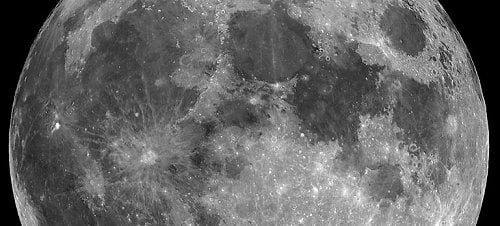It happens every month and specifically every time the moon is full. According to scientists, for about three days on both sides of a full moon, the lunar surface could transform from a tranquil, inert landscape to an electrically charged, potentially dangerous environment. During this time, the moon ploughs through Earth’s magnetic “tail†-- an extension of Earth’s magnetic field. Out in space, the solar wind stretches out the magnetic bubble that surrounds our planet, creating a long "magnetotail" in the downwind direction. When the moon comes in contact with this field, it could cause lunar dust storms and discharges of static electricity. Future lunar explorers might possibly have to take extra precautions during that time of the month.
"Earth's magnetotail extends well beyond the orbit of the Moon and, once a month, the Moon orbits through it," said scientist Tim Stubbs from the Goddard Space Flight Center. "This can have consequences ranging from lunar 'dust storms' to electrostatic discharges."
When the moon crosses this magnetotail, it comes in contact with a gigantic "plasma sheet" of hot charged particles trapped in the tail. The lightest and most mobile of these particles, electrons, pepper the Moon's surface and give the Moon a negative charge.
Scientists say that on the Moon's dayside this effect is neutralized somewhat by sunlight. The ultraviolet photons knock electrons back off the surface, keeping the build-up of charge at relatively low levels. But on the nightside of the Moon, where it’s cold and dark, electrons accumulate and voltages can climb to hundreds or thousands of volts.
Stubbs said that astronauts walking across the dusty charged-up lunar terrain may find themselves crackling with electricity like “a sock pulled out of a hot dryer.†Touching another astronaut, a doorknob, a piece of sensitive electronicsâ€"any of these simple actions could produce an unwelcome zap. "Proper grounding is strongly recommended," Stubbs said.
Moon dust could become charged enough to actually lift from the surface. There’s evidence from the Surveyor 7 lunar lander that when sufficiently charged-up, lunar dust particles could actually float above the lunar surface. This dust could cause problems as it clings to spacesuits, clogs machinery, scratches helmet faceplates (moondust is very abrasive) and generally make life difficult for astronauts.
Much of this is pure speculation, however, Stubbs said, as no one has been on the moon during this time. "Apollo astronauts never landed on a full Moon and they never experienced the magnetotail."
The best direct evidence of this event comes from NASA's Lunar Prospector spacecraft, which orbited the Moon in 1998-99 and monitored many magnetotail crossings. During some crossings, the spacecraft sensed big changes in the lunar nightside voltage, jumping from -200 V to -1000 V, according to Jasper Halekas of UC Berkeley who has been studying the data.
Scientists also say this phenomenon would be worse during a solar storm.
More research will have to be done regarding this monthly cycle and how it might affect those living on the moon in the future.
Original News Source:
Science @ NASA
 Universe Today
Universe Today
